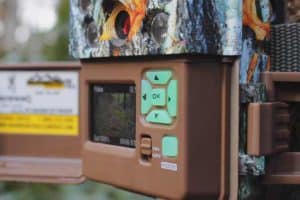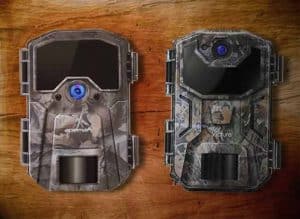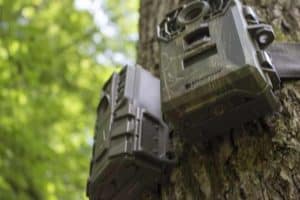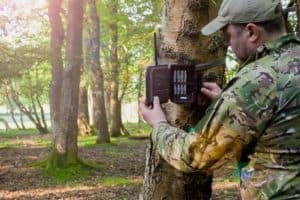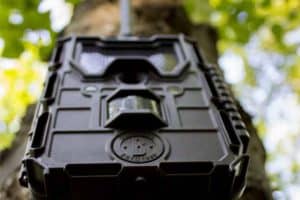

Editor & Article Writer for Outdoor Wilds
Frequently Asked Questions About Trail Cameras
In this post I attempt to answer some of the most common questions I get asked about trail cameras.
I have linked to articles that I have written about some of the subjects in more detail in the body of the text.
I’m always happy to answer any questions. Please send me an email or leave a comment below and I’ll get back to you as soon as possible.
How Do Trail Cameras Work?
I’ll briefly outline the basics on how trail cameras work. It would take a whole article to explain the finer details. Fortunately I have written an article on the workings of a trail camera.
There are 3 main parts to a trail camera.
- Image sensor
- PIR – Passive Infrared Sensor
- Flash
I’ll start off with the PIR. Every object on the planet emits infrared, even a block of ice. I know it’s hard to get your head around but that’s physics for you.
Infrared is an invisible heat source. The PIR detects when there is a change in infrared within the detection zone of the sensor, i.e an animal’s movement. It can tell the difference between background infrared, such as leaves and trees, as they are constant.
With motion detected, the PIR sends an electrical signal to the camera shutter to open and allow light to fall onto the image sensor and record either a still picture or video on the trail camera’s SD card.
Trail cameras have to be able to record images at night too. So a flash is needed to illuminate the area in front of the camera lens.
These days most trail game cameras have infrared flashes which are invisible to game animals. In the past, the early trail cameras had a white flash, similar to a photographic camera.
How to Hide Trail Cameras From Humans
A modern trail camera will have some form of camouflage patterning on the outer case, or at the very least be olive green.
If you’re worried about a trail camera being spotted by a human then it’s worth paying attention to where you place the camera.
If you place the camera at eye level on a well used path without any foliage surrounding the camera then chances are it will get spotted.
Try and place the trail camera well above eye level if possible. The alternative is to use extra camouflage.
You can buy purpose made camo for a trail game camera. Or you can make your own using camouflage netting, burlap and ghillie thread. Add some natural vegetation to the netting such as leaves and twigs to break up the outline shape of the camera.
I have written a more general guide on how to strap a trail camera to a tree, as this is closely related to this question.

What Is The Best Trail Camera?
In most cases this comes down to how much money you’re willing to spend on a trail camera. However, there are some very good cameras in the budget trail camera range that work very well.
I would suggest if you’re new to trail cameras, then take a look at some of the Campark trail cameras. If you’re willing to spend a bit more then my personal favorite is Browning.
It also depends on what you want to record, and what purpose you need the trail cam for.
For home security I would suggest looking at a WiFi enabled trail camera. This will allow you to remotely view the camera from either a laptop computer or a mobile phone.
Hunting and scouting for game animals will require a camera that is super fast. Check out the trigger speed in the specification for the camera. A fast trigger speed is anything below 0.5 seconds.
Detection range is also important for scouting game animals. A distance of over 70 feet is long range, some of the most expensive trail game cameras will have a detection range of over 80 feet, but you will have to pay a lot more for a longer range trail cam. The average range is 65 feet for a budget trail camera.
For garden wildlife recording take a look at these wildlife cameras that are ideal for capturing great wildlife pictures and video in your garden.
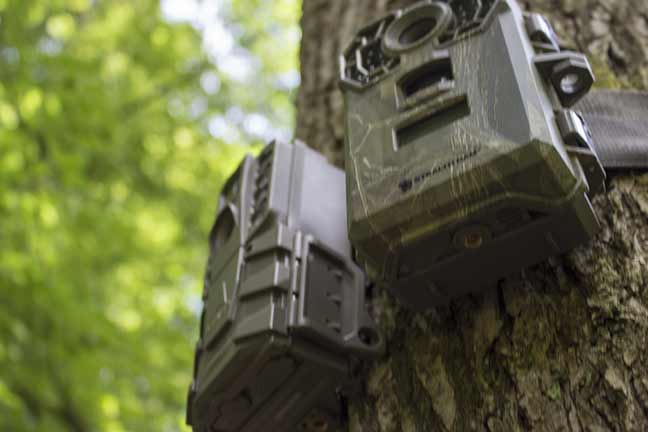
How Much Are Trail Cameras?
The price range for trail cameras is anything between $35 up to $400 plus for some of the more feature rich cellular trail cameras.
If you’re new to trail cameras then I’d suggest spending less than $100. In fact Toguard offers a micro trail cam that is under $40 and has performance to match cameras costing twice as much.
Browning, Moultrie and Spypoint all have a range of trail cameras from budget / entry level up to professional scouting. Expect to pay over $170 at least for a top performance trail camera.
How To Program a Trail Camera
This is a complex question to answer and deserves a whole article by itself. I’ll cover the basics here for people new to trail cameras.
Current trail cameras have a number of modes in which they record images.
- Standard mode – Can be set to record either still images or video
- Burst mode – Setting the number of still images to capture
- Time Lapse mode – Record images at regular intervals over 24 hours
Standard Mode
First off, choose between video or still picture mode. Still picture mode will have the option to select single or burst mode. Burst mode records multiple pictures when the camera is triggered.
Video mode will allow you to set the recording duration of the video clip when the camera is triggered.
Both still image and video modes will also have a setting for resolution. Still images are recorded at low, medium or high and video at 720P or 1080P, depending on the spec of the trail cam.
Time Lapse Mode
Time lapse mode has two main settings. Interval and duration. Interval is how often the camera records an image, i.e 1 second, 5 seconds, 30 seconds. Duration is for video length. 10 seconds every 5 minutes say.
You can also set the camera to cover dusk and dawn times only on some of the Browning trail cameras.
There are an array of other features offered by the trail camera manufacturers out there in addition to the basic modes outlined above.
Further information for programming a trail camera.
How to Find Trail Cameras In The Woods
If you’re not familiar with the area it’s worth checking on Google maps to familiarise yourself with the terrain.
The most accurate way to find a trail camera in the woods is by setting a waypoint on a handheld GPS unit. These are accurate up to several feet and will guide you back to where you left your trail cameras.
I’d also suggest taking a picture on your phone from a distance away from the approach to the camera as a visual reference.
What Is The Best SD Card For Trail Cameras?
Choosing an SD for a trail camera used to be a bit of a nightmare some years ago. Things have become more standardised fortunately these days.
In essence, most modern trail cameras will accept a standard size SD card. To find out more information my article dedicated to SD cards for trail cameras.

How to look after and maintain a trail camera
Trail camera maintenance is essential for optimum performance. There are a number of steps to take for general maintenance.
Checking the firmware is up to date, cleaning the housing and checking over the seals for water ingress. I have written a detailed post on the subject of trail camera maintenance for more information.
Do trail cameras record 4K video
The are currently only 2 trail cameras on the market that record 4K video. They are the Browning Recon Force HD and the Stealth Cam DS4K. Head on over to my 4K trail camera review to find out more.
How to secure a trail camera to a tree
Almost all trail camera come supplied with a nylon tree strap. If you need extra security for your trail camera then something like a Python lock is ideal or alternatively a camera lock box. I’ve written an article just no the subject on how to lock a trail camera to a tree.
Why is my trail camera not recording pictures and video?
Some of the most common reasons why a trail camera stops taking pictures is down to problems with the SD card, the firmware is corrupted or needs to be updated.
There are a number of other reasons why a trail camera is not recording images. Take a look at this article on troubleshooting no pictures being recorded in more detail.
What’s the easiest trail camera to set up and use?
There’s hundreds of trail camera models to choose from these days. It can be daunting trying to choose a trail camera for the first time.
The Primus Bullet Proof trail camera is arguably one of the easiest to set up and use. Read my article to find out more information on easy to use trail cameras.

